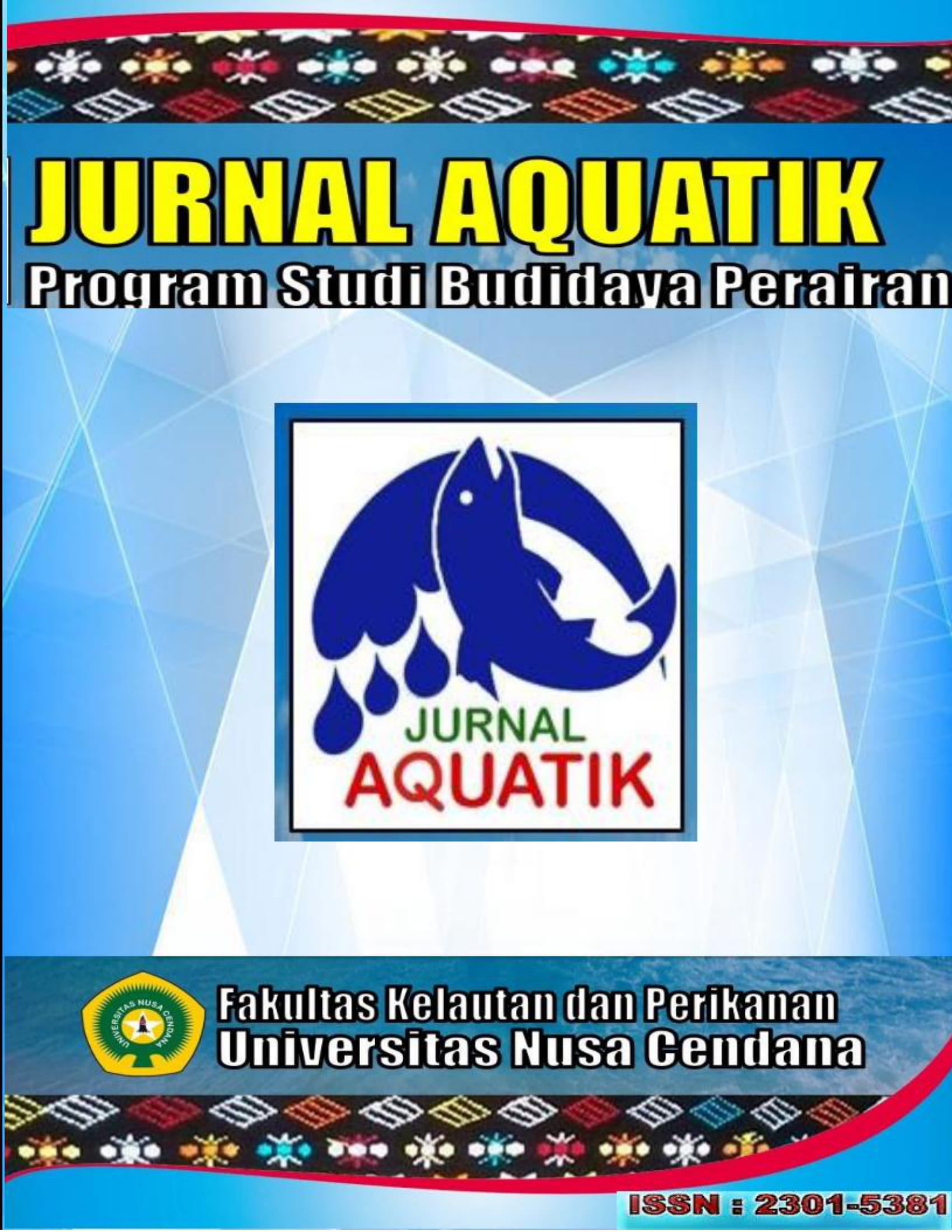KONSUMSI PAKAN, PERTUMBUHAN, KELULUSHIDUPAN DAN PRODUKTIVITAS ABALON (Haliotis asinina) YANG DIPELIHARA DENGAN PADAT PENEBARAN BERBEDA DALAM KURUNGAN TANCAP DIPERAIRAN PANTAR, KABUPATEN ALOR
Abstract
This experiment aimed at finding an optimal stocking density to maximize growth and productivity of abaone Haliotis asinine reared in pen cage in coastal waters.The pen cage was constructed by sticking four 12 mm in diameter iron rods into sea floor to create an area of 0,5 m x 0,5 m. The length of each rod emerged 0.5 m above the sea floor. Nylon cloth of mesh size of 0.5 mm x 0.5 mm covered all four sides and top of the cage. A number of nine cages were deployed in Lamma Beach in Alor Regency. Each pen cage was stocked with one of three stocking densities i.e.,10 inds/cage (equal to 40 inds/m2), 20 inds/cage (80 inds/m2), and 40 inds/cage (160 inds/m2). Each of the density was replicated in triple. During the experiment the abalones were fed with macroalga Ulva sp. The effect of the densities on variables namely food intake, growth rates in shell length and body weight, survival rate, and cage productivity was monitored for 70 days between July and September 2016. ANOVA showed that density had significant effect (P<0.05) on the food intake, the growth rate in length and weight, and the cage productivity, but not on the survival. As the density increased, the feed intake and the growth rate reduced. Abalones at the density of 10 inds/cage consumed Ulva of 0.865 ±0.020 g/ind/d, then decreased to 0.490±0.033 g/ind/d at the density of 20 inds/cage, and the lowest occurred at the density of 40 inds/cage of 0.320±0.053 g/ind/d. In terms of the growth in length and weight, the highest growth rates was observed at the density of 10 inds/cage, i.e., 0.68±0.07 %mm/dand 0.65±0.05 %g/d, then followed in decreasing order by the density of 20 inds/cage of 0.52±0.01 %mm/d and 0.57±0.16 %g/d, and the density of 40 inds/cage of 0.33±0.03 %mm/d and 0.34±0.06 %g/d.Cage productivity in creased as the number of abalones in the cage was larger. The productivity rose from 1.593±0.386 kg/m2 at the density 10 inds/cage to 2.653±0.672 kg/m2 at the density 20 inds/cage to the highest of 3.134±0.562 kg/m2 at 40 inds/cage.The abalones were quite adapted to the pen cage condition and 90 to 91.67% survived at the end of the experiment. It is recommended to apply the density of 20 inds/cage (80 inds/m2) in pen culture as at this density abalones attained both high growth rate and the cage productivity.
Key words: Haliotis asinina, pen cage, density, productivity
Downloads


 Yakob M Bapa(1*)
Yakob M Bapa(1*)


